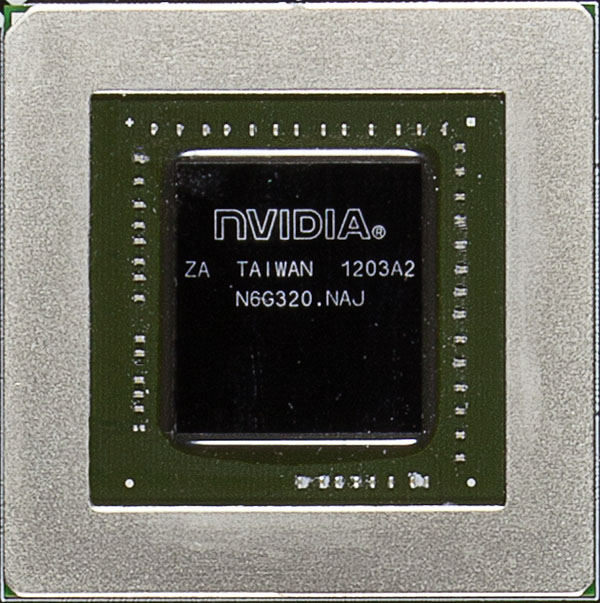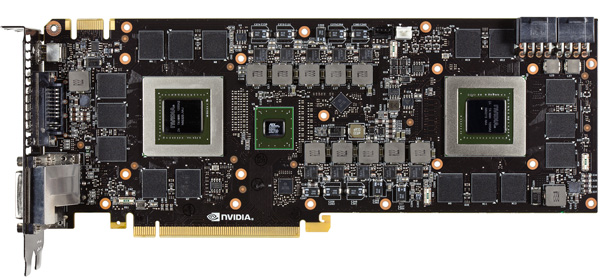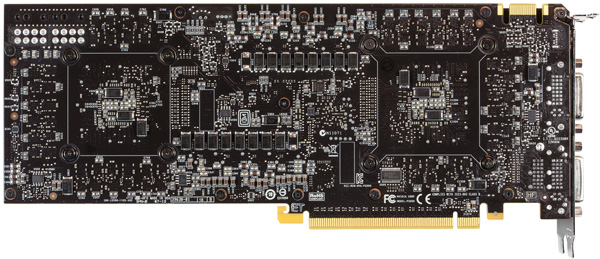GeForce GTX 690 Review: Testing Nvidia's Sexiest Graphics Card
We already know that Nvidia's GeForce GTX 690 sports two GK104s and is priced at $1000. But hardware like this is fun to read about. Oh, you actually want to buy one? Expect performance just shy of two GTX 680s in SLI, and good luck tracking one down!
GeForce GTX 690 4 GB: Hands-Off The Magnesium, Pal!
Bugatti’s Veyron Super Sport. Aston Martin’s One-77. Lamborghini’s Reventón. They’re all million-dollar-plus automobiles that most of us love to read about, probably won’t see on the road, and almost certainly will never own.
And yet, they’re still sexy.
When it comes to drawing parallels between high-end hardware and really nice cars, I’m just as guilty as many others in the technology press. Really, though, the comparisons are hardly realistic. For the price of four Veyron tires, you could buy 35 Core i7-3960X processors. A thousand bucks for a CPU sounds ludicrous, but that’s certainly more accessible than many of life’s other luxuries.
So, while it’s tempting to review Nvidia’s new GeForce GTX 690 as if it were the gaming world’s Bugatti—to describe its features as if it were an untouchable kilogram of PCI Express 3.0-capable unobtanium—the fact of the matter is that this thing could become a viable option for enthusiasts with a thousand bucks in their hands.
Sure, you’ll also need an expensive platform and at least one 30” display in order to enjoy its capabilities. But we can’t just take the GTX 690 for a lap around the track, call it an amazing-looking piece of equipment, and assume you’ll never have to choose between this and a couple of GeForce GTX 680s or Radeon HD 7970s.
No, GeForce GTX 690 has to pass muster—same as any other card that finds its way into our little Nürburgring for GPUs.
We received enough detail about GeForce GTX 690 from Nvidia’s announcement at the GeForce LAN 2012 in Shanghai to write an early preview (Nvidia GeForce GTX 690 4 GB: Dual GK104, Announced). But I’ll try to expound just a little, borrowing from the text used in my news piece. And then of course we’ll move on to the benchmarks at 1920x1080, 2560x1600, and 5760x1080.
Get Tom's Hardware's best news and in-depth reviews, straight to your inbox.
GeForce GTX 690 4 GB: Under The Hood
From that preview:
GeForce GTX 690 is a dual-GK104 part. Its GPUs aren’t neutered in any way, so you end up with 3072 cumulative CUDA cores (1536 * 2), 256 combined texture units (128 * 2), and 64 full-color ROPs (32 * 2).
Gone is the NF200 bridge that previously linked GF110 GPUs on Nvidia’s GeForce GTX 590. That component was limited to PCI Express 2.0, and these new graphics processors beg for a third-gen-capable connection.
We now know that the GeForce GTX 690’s GPUs are linked by a PEX 8747, one of PLX’s third-gen, 48-lane, five-port switches manufactured at 40 nm. The switch communicates with each GK104 over 16 lanes of PCI Express 3.0, and then creates a 16-lane interface to the host. Developed expressly for graphics applications, the 8 W switch is rated for 126 ns latency, so you shouldn’t have to worry about its insertion between the GPUs negatively impacting performance. And again, a number of the capabilities uniquely integrated into NF200, like multi-cast, are supported by PEX 8747, too. Continuing…
Each graphics processor has its own aggregate 256-bit memory bus, on which Nvidia drops 2 GB of GDDR5 memory. The company says it’s using the same 6 GT/s memory found on its GeForce GTX 680, able to push more than 192 GB/s of bandwidth per graphics processor. Core clocks on the GK104s drop just a little, though, from a 1006 MHz base down to 915 MHz. Setting a lower guaranteed ceiling is a concession needed to duck in under a 300 W TDP. However, in cases where that power limit isn’t being hit, Nvidia rates GPU Boost up to 1019 MHz—just slightly lower than a GeForce GTX 680’s 1058 MHz spec.
Power is actually an important part of the GeForce GTX 690’s story. Nvidia’s GeForce GTX 590 bore a maximum board power of 365 W. One 75 W slot and two 150 W eight-pin plugs pushed the 590 mighty close to its ceiling. But because the Kepler architecture takes such a profound step forward in efficiency, Nvidia is able to tag its GTX 690 with a 300 W TDP. And yet it still includes two eight-pin inputs able to deliver up to 375 W, including the slot.
Although the GeForce GTX 690’s board-level features are certainly impressive, this story is arguably just as much about the effort Nvidia’s engineers put into building a card that’d operate quietly, more effectively dissipate heat, and look good in the process. The result is a sturdy, rigid piece of hardware, which demonstrates more showmanship than any reference card preceding it. Back to the preview:
The exterior frame is built of chromium-plated aluminum, rather than the plastic materials covering most other cards (including the GeForce GTX 680). The fan housing itself is a magnesium alloy, which purportedly aids heat dissipation and logically improves vibration dampening compared to plastic shrouds.
Dual vapor chambers cover each of the GPUs, similar to what we’ve seen from both Nvidia and AMD in the past. This time, however, a polycarbonate window over each fin stack allows curious enthusiasts to peer “under the hood.” An LED up top can actually be controlled through a new API Nvidia is making available to partners. So, it might respond to load, getting lighter and darker, as an example.
Currently, I should note, the LED simply lights up when the card is powered on. And here’s where we get to the part sure to turn some folks off…
As with dual-GPU boards from the past, Nvidia is using a center-mounted axial fan, which it claims is optimized for moving air without generating a lot of noise. The trouble with axial fans in this configuration is that they exhaust the heat from one GPU out the rear I/O panel, while the second chip’s thermal energy is jettisoned back into your chassis. Both AMD and Nvidia went the axial route last generation, so we have to surmise that it’s logistically the only approach that makes sense. At least the TDP on GeForce GTX 690 is lower than 590, indicating less maximum heat to dissipate.
Talk to some of the boutique system builders out there and they’ll tell you that shifting from centrifugal to axial-flow fans is akin to the manufacturer dealing with its own product’s thermal output, and then saying, “Here, now you figure out what to do with this.” If we’re to imagine that the most relevant application for GeForce GTX 690 is quad-SLI, you basically have the equivalent of two GeForce GTX 680s dumping hot air into your chassis instead of exhausting out. Finally…
The 690’s rear I/O panel plays host to three dual-link DVI outputs and a mini-DisplayPort connector, accommodating four screens total. A single SLI connector up top links the GeForce GTX 690 to one other card, enabling quad-SLI arrays.
Connecting three displays to two GeForce GTX 680s can be a real pain. Although each board offers four display outputs, there are recommended combinations, depending on whether your screens employ DVI, HDMI, or DisplayPort. With three DVI connectors on GeForce GTX 690, configuration becomes significantly easier.
Current page: GeForce GTX 690 4 GB: Hands-Off The Magnesium, Pal!
Next Page Overclocking And Tessellation Performance-
robwright I wonder, given the price of the 690, just how limited the quanitities will be. Which brings up another question, one that Nvidia (and AMD as well) would probably be reluctant to answer: are they making and shipping fewer of the top-shelf Halo cards today than they did 5 or six years ago?Reply -
rebel1280 ....... Lamborghini’s Reventón ...... +infinity for mentioning that work of art T_T didn't even read the article until after I got my fix for the Lamborghini’s Reventón on the net haha. That car may be the only proof left to us of the old gods, in particular Mercury (god of transport) lolReply -
lahawzel 680s are already nearly nonexistent, so I expect these 690s to be just as mythical and hard-to-find as the Radeon 6990.Reply -
phamhlam LaHawzel680s are already nearly nonexistent, so I expect these 690s to be just as mythical and hard-to-find as the Radeon 6990.Reply
6990 aren't that hard to find. Back in January before the 7000 series came out, you could easily pick one or two up. I am pretty sure in 6 month, the 690 will be easy to grab. -
frombehind I wonder if someone will come out with a version that has a stock water-cooler built in? Then it really would the card to get ^^Reply







